Quick Read
Sephora’s marketing strategy focuses on an omnichannel approach (Seamless multi-platform customer experience), leveraging digital innovation and personalised customer experiences to stay ahead in the beauty retail industry. This case study delves into the business strategy of Sephora, analysing its unique marketing strategies and target market.
Learn From Asia’s #1
Digital Marketing Institute
AI-Based Curriculum
Dive in to the future with the latest AI tools
Placement at top brands and agencies


 & more...
& more...

Introduction
Have you ever wondered how Sephora transformed from a small French retailer into the world’s leading beauty destination? In this blog, we’ll peel back the layers of the company’s remarkable success story and explore the brilliance of Sephora’s marketing strategy.
About Sephora
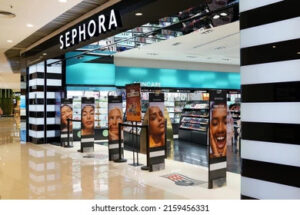
Source: Google
Founded in 1969 by Dominique Mandonnaud in France, Sephora revolutionised the beauty retail industry with its open-sell environment. Acquired by LVMH Moët Hennessy Louis Vuitton in 1997, Sephora’s mission is to inspire fearlessness in beauty. With over 2,600 stores in 34 countries, Sephora is renowned for its diverse range of products and innovative in-store experiences.
Updated Statistics
- Sephora’s revenue in 2022 reached $11 billion, reflecting significant growth in the global beauty market (Source: LVMH Annual Report 2022).
- Sephora operates over 2,600 locations worldwide, with a strong presence in North America, Europe, and Asia (Source: Sephora Corporate).
- The Sephora mobile app has over 10 million downloads and is a key driver of digital sales (Source: App Annie).
Latest News
Business News:
In 2023, Sephora announced a strategic expansion into smaller cities and towns, aiming to reach new customer segments (Source: Retail Dive).
Product Launch:
Sephora launched a new line of clean beauty products under its private label, Sephora Collection, responding to increasing demand for sustainable and eco-friendly options (Source: WWD).
Marketing News:
The ‘We Belong to Something Beautiful’ campaign has been widely acclaimed, focusing on inclusivity and diversity in beauty (Source: Adweek).
Celebrity News:
Sephora recently collaborated with celebrity makeup artist Pat McGrath, launching an exclusive collection that received significant media attention (Source: Vogue).
Do you seek to unlock your full potential in digital marketing? Our PG programme might just be the answer. Enroll in our Digital Marketing Masters Course and uncover the possibilities.
But for now, let’s continue with our research on Sephora’s marketing strategy.
🚨 FREE MASTERCLASS
Building a Profitable Instagram Strategy
Worked with:








virsaini
Buyer Persona

Buyer’s Persona
Name:
Prachi
Place:
Mumbai
Age:
20 years
Profession:
Web-Developer
Motivation
- To explore and experiment with beauty products.
- The desire for high-quality, innovative beauty solutions.
Interest & Hobbies
- Makeup and skincare.
- Following beauty trends and influencers.
Pain Points
- Finding the right products for their skin type.
- Access to a diverse range of beauty products in one place.
Social Media Presence
- Highly active on Instagram, YouTube, and TikTok, engaging with beauty enthusiasts and influencers.
Sephora leverages this buyer persona to tailor their marketing strategies, ensuring it offers personalized recommendations, engages with beauty influencers, and provides a diverse range of products that meet the specific needs and interests of Sephora’s target market.
Note: Improve your skills by exploring our Digital Marketing Course in India which provides extensive knowledge and the latest industry trends.
Marketing Strategy of Sephora

Source: Google
Sephora employs an omnichannel marketing strategy, seamlessly integrating online and offline experiences. Their campaigns often highlight diversity, innovation, and customer engagement. Analysis shows these strategies have significantly boosted brand loyalty and market share. Let’s get into the details of Sephora’s Target market and how this brand leverages this to its advantage.
Segmentation, Targeting, and Positioning
Sephora’s target market is mainly women, in their pre-teen to middle-age years. This is the group that cares most about lifestyle and status symbols, taking a keen interest in self-care. Sephora targets women who are really into luxury beauty (High-end beauty products) and personal care products belonging to the upper-middle and rich class.
The company started in Paris as a retail store. It has now expanded around the world with numerous Sephora locations, offering its product range both in-store and online.
Sephora positioned itself in the market by being the first one to start assisted self-service in the retail industry. It has been continuously rolling out new stores in most countries.
Considering a Career in Digital Marketing? If you’re residing in any of the mentioned locations, and are interested in pursuing a career in digital marketing, we have some exciting news for you! These cities offer a wealth of excellent digital marketing courses that can equip you with the skills and knowledge to launch your journey in this dynamic field. Check out the digital marketing courses in Mumbai, digital marketing courses in South Delhi and digital marketing courses in Ahmedabad.
Digital Marketing Strategies
SEO Strategy:
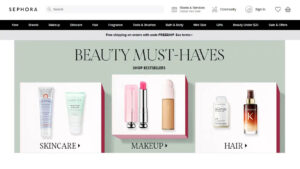
Source: Google
As SEO (search engine optimization) ranking suggests, the number of organic keywords (Natural search engine terms) – below 500 is poor, above 1000 is characterised as good and 10,000+ is characterised as amazing. Sephora has 2,551,111 organic keywords, which, in our opinion, is truly mindblowing. This beautifully highlights the strength of the digital marketing strategy of Sephora. Furthermore, the organic traffic (Unpaid website visitors)per month is 23,236,003. Why does Sephora work so hard to strengthen its position on Google SERP (Google search results page)results you ask? Well, in a nutshell, A good ranking (High position in results)and a favourable placement can raise the profile of the brand. In short, SEO strategies are crucial for the development of the website and to provide more visibility to the relevant audience.
Also Read: 12 Best Digital Marketing Courses in Delhi with Placements
SMM Strategy:
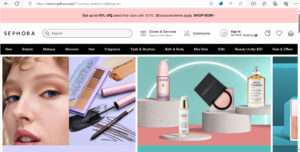
Source: Google
Social media marketing is really important when it comes to gathering a large audience, and Sephora’s digital marketing strategy in terms of social media is pretty strong compared to its competitors. The company is active on four major social media platforms: Facebook, Twitter, LinkedIn, and Instagram. Sephora’s target audience can easily find them on these platforms, with different accounts dedicated to the global audience and the Indian market on Instagram.
The content posted by Sephora varies from platform to platform. Sephora’s marketing strategy involves leveraging Facebook and Instagram, for example, for a mix of promotional and informational content, featuring new product launches, influencer collaborations, special offers, beauty tips, and even health and hygiene content. LinkedIn, on the other hand, serves a more corporate function, with content geared towards professional audiences.
Hey, if you want your business to be successful on social media platforms, check out the courses on digital marketing online offered by IIDE.
E-commerce Strategy:
Sephora sells all its products through its website. Sephora has developed an innovative tool called the Virtual Artist, which uses face recognition technology and makes shopping from home for certain products very close to the real or in-store experience. Sephora products can also be purchased on Amazon, Myntra, and many other sites.
Just like Sephora, many other companies for example Amazon, Flipkart and Uniqlo also follow a similar e-commerce strategy to grow their business in the digital field.
Mobile App:
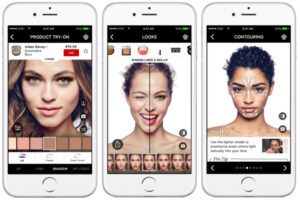
Source: Google
Sephora has a mobile application called ‘Sephora’, through which customers can purchase skincare, makeup, and beauty products from top sustainability-minded brands on the go. On the app, the customer can also access photos that serve as inspiration, exclusive offers, and more.
The application also features live chat support where users can get unbiased opinions and recommendations of products from expert beauty advisors. What’s more, Sephora’s customers can easily reserve products online to pick them up in-store or order them and get same-day delivery by using the app. The application got more than 50 Lakh+ downloads with a star rating of 4.7.
Influencer Marketing Strategy:

Source: Google
Sephora’s marketing strategy includes creating influencer partnerships with makeup enthusiasts who generate content for the company. As part of the influencer selection process, the company curates more than 15,000 applications to bring you the top 25 members of the #SephoraSquad, who will create content for the brand.
This selected group of beauty influencers is incredibly diverse, representing a wide range of ethnicities, nationalities, genders, sexual orientations, skin tones, and hair textures. Such programmes allow them to test Sephora’s products and review them across the internet.
Here, The giant beauty retailer Sephora took advantage of the chance to interact with its audience of micro-influencers(Small-scale social media influencers), who are already interested in makeup reviews, to persuade them to promote products by creating content further helping generate consumer leads (Potential customer contacts) for Sephora.
Check Out: Find out more about our digital marketing courses in Gurgaon and digital marketing courses in Jaipur, tailored to your needs.


Marketing and Advertising Campaigns:
The Unlimited Power of Beauty Campaign
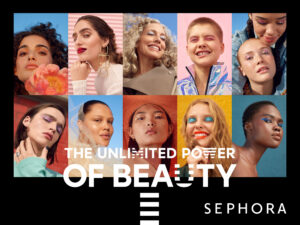
Source: Google
This campaign was launched with the idea to honour the beauty of every woman, regardless of her age, race, or ethnicity. The campaign portrayed a diverse group of women, each of whom exudes self-assurance and beauty. Several short films were released to accompany the campaign’s premiere on social media and Sephora’s website. These films depicted the lives of the women who were featured in the campaign.
Black Beauty is Beauty campaign

Source: Google
This initiative honoured the contributions made by Black people to the beauty sector. The campaign explored the numerous ways that Black people have affected beauty trends over the years and showcased a varied cast of Black models and influencers. On social media and Sephora’s website, the campaign was introduced and was accompanied by several instructional materials explaining the background of Black beauty.
Pride Month campaign

Source: Goggle
This initiative honoured Pride Month and the LGBTQ+ community. The campaign emphasized the value of self-expression and acceptance and showcased a wide group of LGBTQ+ models and influencers. Along with several educational resources regarding LGBTQ+ history and culture, the campaign was introduced on social media and Sephora’s website.
These strategies highlight how Sephora integrated various marketing strategy of Sephora across multiple channels, emphasizing the importance of SEO, social media, e-commerce, mobile apps, and influencer partnerships in its comprehensive marketing approach. This Sephora case study underscored the brand’s commitment to innovation and customer engagement.
Top Competitors:
- Ulta Beauty, Inc. is an American luxury department store chain headquartered in Seattle, Washington, and founded by John W. Nordstrom and Carl F. Wallin in 1901. The original Wallin & Nordstrom store operated exclusively as a shoe store, and a second Nordstrom shoe store opened in 1923.
- L’Oreal currently markets over 500 brands and thousands of individual products in all sectors of the beauty business: hair colour, permanents, hair styling, body and skin care, cleansers, makeup, and fragrances.
- Estee Lauder Company is an American multinational cosmetics company, a manufacturer and marketer of makeup, skincare, perfume, and hair care products, based in Midtown Manhattan, New York City. It is the second-largest cosmetics company in the world after L’Oréal.
- Nordstrom, Inc. is an American luxury department store chain headquartered in Seattle, Washington, and founded by John W. Nordstrom and Carl F. Wallin in 1901. The original Wallin & Nordstrom store operated exclusively as a shoe store, and a second Nordstrom shoe store opened in 1923.
- Avon Products, Inc., simply known as Avon, is an American-British multinational cosmetics, skincare, perfume, and personal care company, based in London. It sells directly to the public. Avon had annual sales of $9.1 billion worldwide in 2020. It is the fourteenth-largest beauty company.
Failed Campaigns:
In 2018, Sephora faced backlash for a campaign perceived as insensitive during Ramadan. The controversy arose when Sephora Malaysia released a beauty guide titled “A Beautiful Ramadan,” which some felt was inappropriate and commercialized the holy month.
Issue:
A 2018 campaign was criticised for lack of diversity and inclusivity, sparking backlash on social media.
Backlash:
The campaign faced significant criticism from consumers and media, leading to calls for more inclusive representation.
Response:
Sephora quickly addressed the issue by revamping the campaign to include a diverse range of models, demonstrating their commitment to inclusivity and customer feedback.
Despite having a ready market for its skincare and makeup, Sephora failed in Hong Kong. Nine years later, Hong Kong appears to offer plenty of makeup and skincare choices. However, if you consider yourself a global citizen, there’s a good chance your favourite items aren’t available.
In ‘Asia’s World City,’ it seems only a small percentage of people fitting narrow beauty standards are catered for. Even among brands known for their extensive ranges, many shoppers are missing out. Take MAC Cosmetics’ Studio Fix Fluid foundation; Hong Kong stores carry 10 shades – out of 42.
This ends the elaborative Sephora digital marketing strategy. Let us conclude our learning below from the marketing strategy of Sephora.
Learn From Asia’s #1
Digital Marketing Institute
AI-Based Curriculum
Dive in to the future with the latest AI tools
Placement at top brands and agencies


 & more...
& more...

Conclusion:
To conclude the Sephora marketing strategy, Sephora has a huge customer base and is rightly positioned in the minds of Sephora’s target market, audience, and customers. This is all thanks to the amazing marketing strategies that involved the use of SEO, SMM, content marketing, mobile apps, e-commerce, etc.
The company has outperformed its competitors, and the main reason for this is the company’s outstanding marketing efforts in highlighting the brand to its customers. As the digital space is experiencing a boom in today’s world, a company needs to do better digital marketing.
Additional Information
Want to quickly learn the essentials of digital marketing? Our extensive Online Digital Marketing Course will help you achieve success in this ever-changing industry.
If you’re unsure about enrolling, try our make-money-from-home free masterclass first! Get a sneak peek at the content and decide if it’s right for you.
Alternatively, if you’re curious about AI, our free ChatGPT course might be the perfect choice.
Lastly, if you liked this blog on Sephora’s marketing strategy, we recommend exploring our other digital marketing case studies. We’ve covered some top companies like GAP, Shopify and Airbnb.
Don’t forget to check out our digital marketing blogs as well. You might find the perfect course for you among them!
Thank you for taking the time to read the Sephora case study, and do share your thoughts on this marketing strategy of Sephora in the comments section below.
FAQs
Q1. What is Sephora's target market?
Sephora's target market includes beauty enthusiasts aged 18-35, interested in high-quality, innovative beauty products.
Q2. How does Sephora ensure product quality?
Sephora collaborates with top brands and conducts rigorous quality checks to ensure the highest standards for their products.
Q3. What is Sephora's return policy?
Sephora offers a flexible return policy, allowing customers to return products within 30 days of purchase with a receipt.
Q4. How can I contact Sephora customer service?
You can reach Sephora's customer service through their website, mobile app, or by calling their helpline number.
Q5. Does Sephora offer international shipping?
Yes, Sephora provides international shipping to several countries through its online store.
Q6. What is Sephora's loyalty program?
Sephora's Beauty Insider loyalty program offers exclusive perks, discounts, and early access to new products for members.
Q7. Can I book a beauty consultation at Sephora?
Yes, Sephora offers in-store and virtual beauty consultations with their expert beauty advisors.
Q8. What payment methods does Sephora accept?
Sephora accepts various payment methods, including credit/debit cards, PayPal, and gift cards.
Q9. Does Sephora offer gift cards?
Yes, Sephora offers gift cards available for purchase in stores and online.
Q10. How does Sephora handle customer complaints?
Sephora has a dedicated customer support team to address complaints and ensure quick resolution of issues.








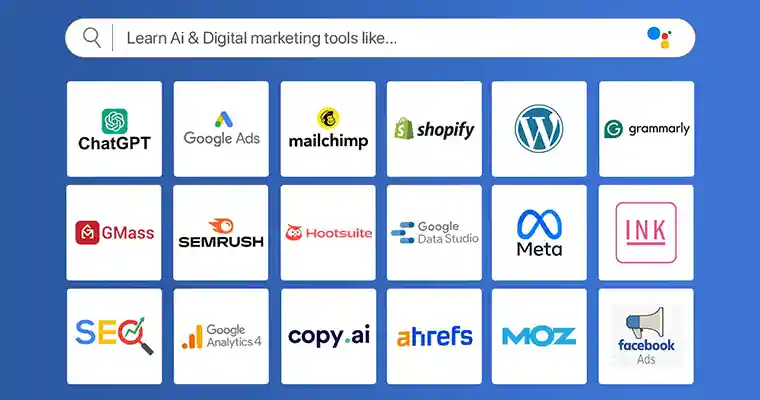





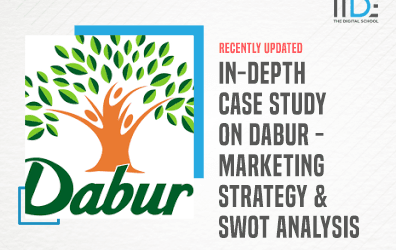
Marketing strategy of sephora,coupled with a thorough STP analysis,unveils its unique approach to customer engagement and brand positioning.